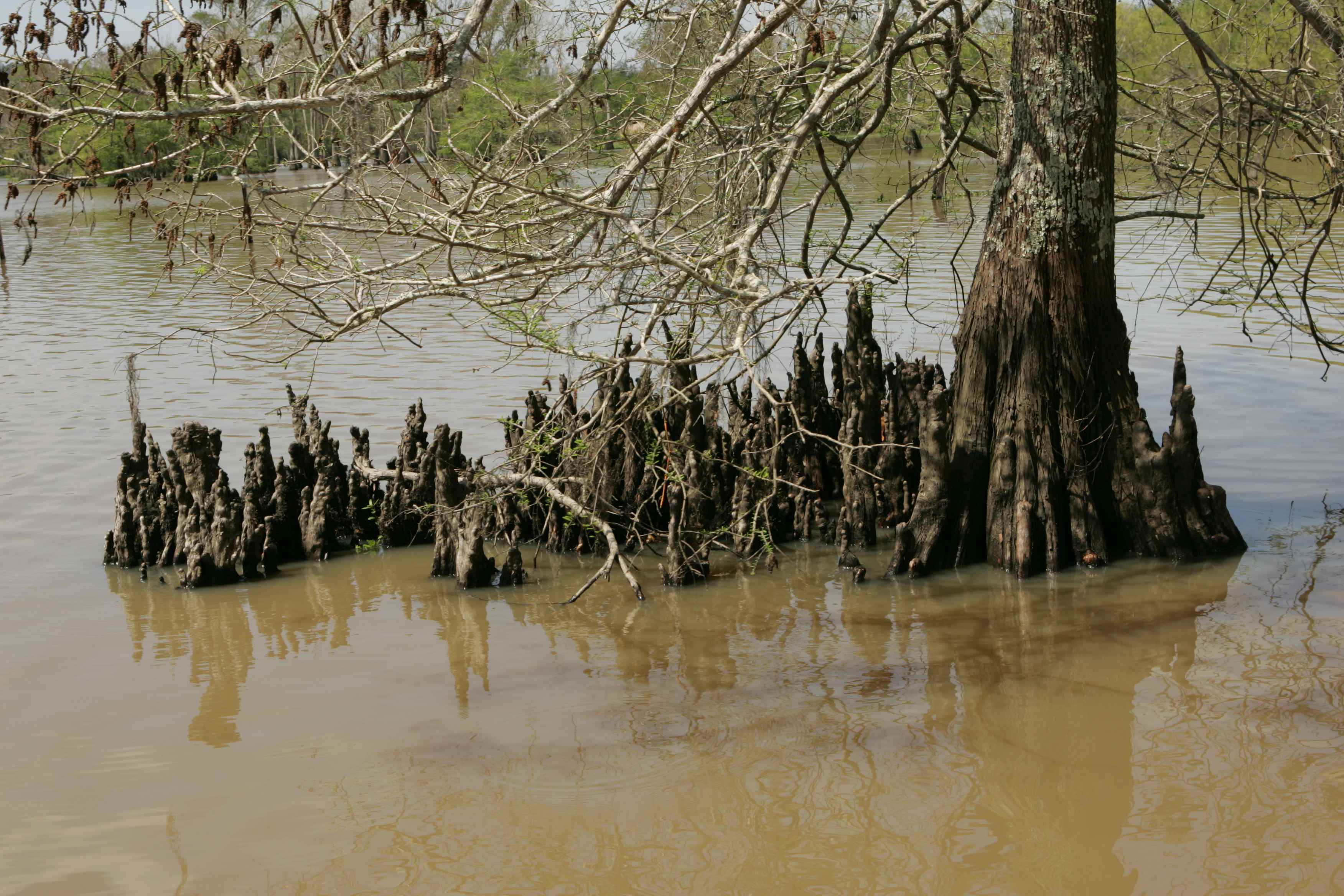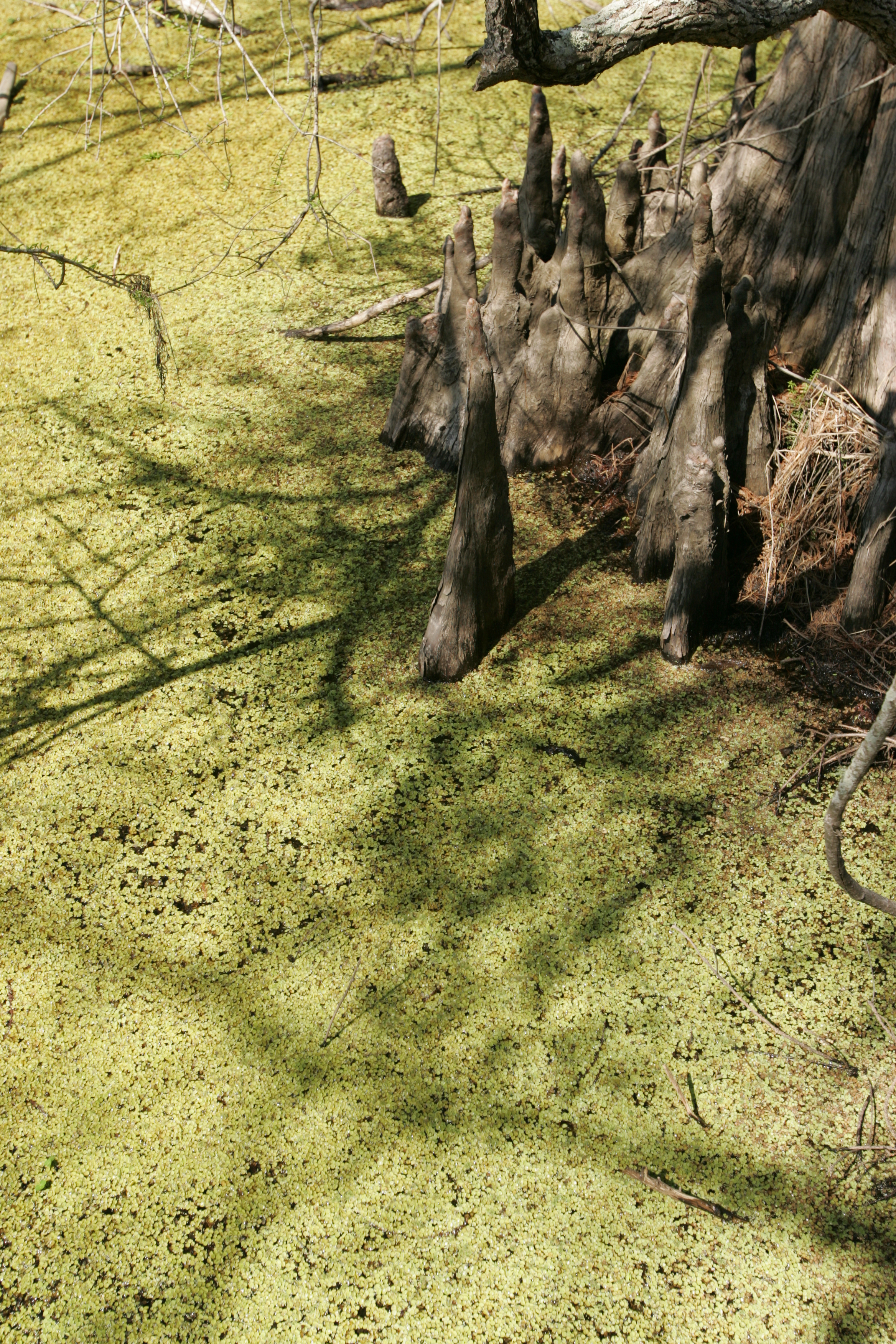Bald Cypress : Description
The Bald Cypress, or Taxodium distichum, is a deciduous conifer. However, it is not a true cypress because it is not in the genus Cupressaceae. Since it is in the Taxodium genus it is related to other member of the genus such as the Sequoia and Metasequoia. The tree’s natural range is along the Atlantic Coastal Plain from southern Delaware to southern Florida and westward along to lower Gulf Coast Plain to southeastern Texas. It usually lives in very wet soil made up of muck, clay, or fine sand; however, it can live on soil not in a swampy area and can withstand temperatures of -20 to-29 degrees F, making it an adaptable tree that can survive almost anywhere. The Bald Cypress tree is a large and slow-growing tree, which often reaches heights of 100-150 feet with a trunk width of 3 to 6 feet. The largest Bald Cypress by volume is 83 feet tall with a trunk 17 feet wide and a crown spread of 85 feet. This specimen grows in Cat Island National Wildlife Refugee located near Baton Rouge, LA. The bark of the tree is a reddish brown color, but where it is exposed to weather it can be a grey color. The bark is very fibrous and peels in strips. The leaves of the Bald Cypress make it very unique among other needle-bearing conifers. This is because the needles turn a brownish-orange color before they drop in the late fall or early winter, making the Bald Cypress deciduous.
“Knees”
Another unique characteristic of the Bald Cypress is its “knees.” Like its buttressed trunk, these knees only appear near water or when the tree is actively submerged in a swamp setting. These knees will stick up from the tree’s roots as much as 6 feet high. Their use in the tree is the subject of much discussion. Some think that the knees provide a way to take in more oxygen in its traditional low oxygen environment, and some think that they work as anchors to help the tree keep its title as one of the only trees that can withstand long term flooding.



